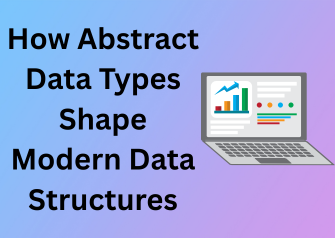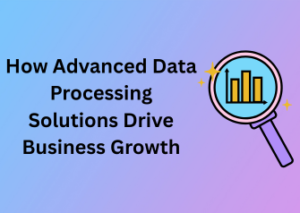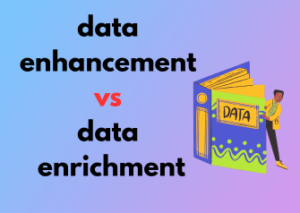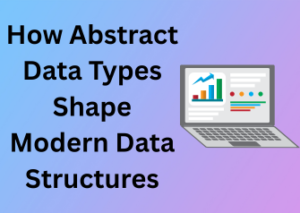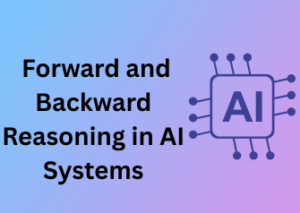Let’s get this straight—abstract data types (commonly abbreviated as ADTs) might sound a little intimidating at first, especially if you’re new to computer science. But trust me, they’re not as complex as they seem!
Why Are They Abstract?
Imagine you’re driving a car. Just because you can drive it doesn’t mean you need to know how every nut and bolt inside the engine works. You’re more concerned with pressing the gas pedal and noticing that, hey, the car speeds up. That’s the key idea behind abstraction: focusing on what something does, not how it does it. Similarly, abstract data types describe what operations you can perform with the data—like adding, removing, or searching for elements—without worrying about the nitty-gritty details of how it all works under the hood.
The Foundation of Efficient Code
ADTs provide the basis on which actual data structures (like arrays, linked lists, stacks, and queues) are built. This abstraction allows developers to write cleaner, more efficient code, decoupling the what from the how. By focusing on operations, you avoid getting bogged down in implementation details too early.
- For example: If you want to design a grocery list app, you may decide the “list” should support adding items, removing items, and checking what’s already there. These are the operations—not the specifics of how the list is stored. That’s the essence of an ADT in action.
Core Components of ADTs
To grasp ADTs fully, there are two main pillars you need to understand:
- The Data: This refers to the actual information being managed. For instance, if you’re working with a stack (a common ADT), the data might consist of numbers, strings, or even objects.
- The Operations: Next, you define the operations that can be performed on the data. Sticking with the stack example, this might include pushing data onto the stack, popping data from it, or checking the top item without removing it (these are often called push, pop, and peek operations).
Why Should You Care?
By working with ADTs, developers can take a top-down approach to problem-solving, focusing first on what needs to be done before worrying about how to implement it. This not only improves clarity in your code but also makes debugging and refactoring easier down the line. It’s a win-win for efficiency and your sanity!
So next time you encounter the term abstract data types, don’t panic! Take a step back, think about what tools you need to manipulate your data, and map them to the operations an ADT provides. It might not feel natural at first, but trust me, it’s a skill that will pay dividends the more you use it.
Why Abstract Data Types Matter in Building Efficient Algorithms
Algorithms are the heart and soul of modern computing. Whether we’re optimizing the route for delivery drivers or recommending the next binge-worthy show, algorithms do all the heavy lifting. But here’s the secret sauce that makes them truly shine: Abstract Data Types (ADTs). They’re not just some fancy computer science concept; they’re the cornerstone of building algorithms that are both powerful and efficient. Let me explain why they matter so much.
Understanding the Link Between ADTs and Algorithms
Think of ADTs as the blueprints for how we organize and interact with data. These blueprints don’t dictate how the construction happens, they’re more about what features and behaviors are expected. For example, a stack ADT defines that data can be added and removed in a last-in, first-out (LIFO) order. ADTs give us a clear idea of how our data will behave, and that foresight helps us design better algorithms upfront.
Here’s the kicker: the connection between ADTs and algorithms is symbiotic. Efficient algorithms often rely on the right ADT to work smoothly, while an ADT’s features can guide the design of the algorithm itself. You wouldn’t want to use a queue to manage undo operations (a task better suited for a stack). By aligning the right problems with the right ADTs, you create tighter, faster code.
Efficiency: Why Choosing the Right ADT Makes All the Difference
- Optimized Memory Usage: Using inappropriate structures can gobble up memory unnecessarily. Choosing the correct ADT helps keep your algorithm lean and trim, freeing up resources for other tasks.
- Speed is King: Algorithms often deal with massive datasets. An efficient ADT allows you to process operations like insertion, deletion, and searching in no time. For instance, a hash table ADT offers average
O(1)time complexity for these operations, which is why it’s ideal for tasks like looking up user information. - Scalability: As data grows, inefficient algorithms break down. ADTs act as a guiding framework to ensure your algorithm remains robust even when handling millions (or billions) of elements.
Practical Example: Sorting and Searching
Let me paint you a picture. Imagine you’re designing a search engine. To retrieve user results quickly, you need an algorithm powered by a fast data access strategy. Enter the binary search algorithm, elegantly paired with a sorted array ADT. Binary search’s logarithmic efficiency (O(log n)) is only possible because it relies on the predictable, structured behavior of sorted arrays.
But what if your dataset grows dynamically? That’s when you might swap that array for the binary search tree ADT, which maintains order while allowing for more dynamic inserts and deletes. As you can see, the success of your algorithm hinges on matching it with the best ADT for the job.
The Power of Abstraction
Algorithms are often about solving real-world problems, but the world is messy. By abstracting away the low-level details, ADTs let you focus on the logic rather than the minutiae. This abstraction makes it easier to design, test, and tweak your algorithms without worrying about every implementation detail—because someone else did that hard work when they defined the ADT. Thank you, computer science gods!
The Importance of Encapsulation in Abstract Data Types
Imagine trying to build a delicate machine with exposed, tangled wires and moving parts scattered everywhere. It sounds chaotic, right? That’s precisely why we need encapsulation when working with Abstract Data Types (ADTs). Encapsulation is like putting all those delicate parts into a sleek, protective case, simplifying how we interact with the machine. Let’s explore how this works in the world of ADTs!
What Exactly Is Encapsulation?
Encapsulation is the practice of bundling an object’s data and the methods (or operations) that manipulate this data into one cohesive unit. For Abstract Data Types, it means hiding the internal implementation details of data structures and only exposing what is necessary for end users. Think of it like using an ATM, you don’t see the wiring and mechanisms inside; you simply interact with buttons, slots, and the screen.
Why Is Encapsulation Essential?
Now, you might be wondering, “Why does it matter if I see what’s going on inside an ADT?” The answer lies in the key benefits of encapsulation:
- Simplicity: By hiding the complexity of how things work behind the scenes, encapsulation makes ADTs easier and cleaner to use. Instead of worrying about the nitty-gritty of how a stack stores elements, you only need to know commands like
push(),pop(), andisEmpty(). - Flexibility: Encapsulation allows you to change how an ADT is implemented without affecting the rest of your program. For example, you could switch from using an array-based implementation of a queue to a linked list approach without having to rewrite all the code that interacts with it.
- Error Prevention: By restricting direct access to the internal workings of an ADT, you reduce the risk of introducing bugs. You no longer have to worry about a portion of your code accidentally messing with internal data structures, as they are tucked neatly behind a set of well-defined operations.
- Improved Collaboration: In teams of developers, encapsulation ensures that team members working on different parts of a system don’t accidentally interfere with one another’s work. Everyone agrees on how to use the ADT without needing to understand its inner workings.
Real-Life Example: Encapsulation in Action
Let’s take the example of a stack ADT. When using a stack, you’re given a few key operations—add (push), remove (pop), and view the last item (peek). What’s going on behind these operations? The stack might use an array, or perhaps a linked list, to store elements. However, these details are hidden (encapsulated). As a programmer, you don’t need to worry about resizing an array or managing pointers; the encapsulation does that heavy lifting for you!
How to Design Encapsulated ADTs
To get the most out of encapsulation, follow these tips when designing and implementing Abstract Data Types:
- Separate Interface from Implementation: Clearly define the operations a user can perform on your ADT and make these operations available through public methods. Keep the details private.
- Use Access Modifiers: Most programming languages support access modifiers like
private,protected, or equivalent. Use these to prevent external code from tampering with an ADT’s internal data. - Stick to Intuitive Names: Make your operations easy to understand by giving them clear, descriptive names. For example, a queue’s
enqueue()anddequeue()methods are intuitive and reflect their purpose. - Validate Inputs: Through encapsulation, you can ensure that the ADT only processes valid data by checking inputs in your methods. This safeguard adds an extra layer of reliability.
Comparing Abstract Data Types: Array, List, Stack, and Queue
Let’s get real for a moment: abstract data types (ADTs) might sound intimidating, but they’re the behind-the-scenes superstars accelerating your software, your apps, and even your favorite streaming services. Today, we’re diving into the nitty-gritty of some common ADTs, arrays, lists, stacks, and queues. By the end, you’ll not only know what they are but also understand how they shape the way we deal with data. Buckle up!
1. Arrays: The Foundation of It All
Think of an array as a neat row of lockers, all aligned in a single line. Each locker (or “slot” in technical terms) holds a piece of data, and you can access it simply by knowing its position, or “index.” Arrays are the bread and butter of many algorithms because they provide instant access (O(1)) to data when you know the index number.
Pros:
- Super fast lookups if you know the index.
- Memory-efficient because elements are stored in a contiguous block.
Cons:
- Fixed size—if you guess wrong, you could run out of space or waste memory.
- Inserting or deleting elements in the middle can be costly (O(n)).
Best for static data or when efficiency is more important than flexibility.
2. Lists: The Flexible Sibling
Lists, like arrays, are a collection of elements. But here’s a twist: they bring flexibility to the table. Think of them as a chain of linked compartments. Each compartment carries data and a “pointer” that directs you to the next compartment in the chain. Whether you need a singly linked list or a doubly linked one, lists aim to solve the rigid sizing issues of arrays.
Pros:
- Dynamic sizing, lists grow or shrink as needed.
- Efficient for inserting or deleting at the beginning or middle (O(1) for linked lists if the pointer is known).
Cons:
- Accessing an element takes longer (O(n)), as you must traverse the list.
- More memory overhead due to the pointers.
Best when flexibility and frequent insertions or deletions matter.
3. Stacks: LIFO at Its Best
If you’ve ever piled up books or plates, you’ve intuitively used a stack. The stack operates on a Last-In, First-Out (LIFO) principle. The last item added is the first to come off. Use cases? Tons! From undo operations in text editors to navigating browser history, stacks excel at managing tasks in reverse order.
Pros:
- Simple to implement.
- Great for recursive problems and temporary data storage.
Cons:
- Limited access—only the top element is accessible.
- Can result in stack overflow if not managed correctly.
Perfect for scenarios where you need last-in-first-out data management.
4. Queues: Ready, Set, FIFO!
As the name suggests, queues mimic the experience of lining up in order—First-In, First-Out (FIFO). You’ll find queues everywhere: think printer job management, task scheduling, or handling requests in a server.
Pros:
- Efficient for handling sequential processes.
- Super simple to maintain the order of tasks.
Cons:
- Fixed-size queues can run out of space.
- Managing circular queues requires extra care.
Your go-to for operations requiring first-in-first-out processing.
Choosing the Right ADT for the Job
When deciding between arrays, lists, stacks, or queues, the golden rule is this: The best tool depends on the task. If you need predictable access, stick with an array. Building dynamic data storage? Welcome a list. And when order matters—deciding whether it’s LIFO or FIFO helps you choose between stacks and queues.
Wrapping up, learning these ADTs gives you a solid foundation in problem-solving. The better you understand their unique quirks, the more confidently you’ll navigate any programming challenge. Start experimenting, you’ve got this!
Real-World Applications of Common Abstract Data Types

Abstract Data Types (ADTs) might sound like a dry or overly theoretical concept, but trust me when I say they are the unsung heroes of countless real-world applications. These high-level concepts form the backbone of everything from mobile apps to complex machine learning algorithms. Curious about how they show up in everyday tech? Let’s dive into some relatable examples of ADTs in action!
1. The Power of Queues in Handling Tasks
Ever wondered how your email app manages to flawlessly handle sending and receiving messages? Or how streaming services deliver the next episode so seamlessly? Behind the scenes, a Queue, one of the simplest yet most powerful ADTs—works tirelessly. Queues operate on a first in, first out (FIFO) principle, making them perfect for task scheduling, message handling, and even printer operations.
Picture this: when you press send on an email, it goes into an email-sending queue. This organized queue ensures that every email is sent in the correct order, without leaving you stuck in inbox purgatory. The simplicity of a queue is what makes it perfect for managing these kinds of real-time processes.
2. Stacks: The Secret Behind Your Browser’s “Back” Button
You’ve definitely benefited from Stacks when browsing the web. Every time you click a link, it’s added to a stack. This structure works on a “last in, first out” (LIFO) principle. Why? Well, when you hit that magic “Back” button, the stack pops the most recent page off and returns you to the previous one.
Stacks are also highly useful in programming environments. For example, they’re key to managing function calls and recursion. The next time you breeze through tabs or resolve errors in your code editor, thank the humble stack working behind the scenes!
3. Lists and Their Many Hats
From creating playlists on Spotify to managing contact lists on your favorite messaging app, Lists are everywhere. Lists are versatile because they allow dynamic and ordered storage of elements. Whether it’s adding, removing, or shuffling items around, lists can handle it all.
In game development, for example, lists are used to track the inventory of a player or manage active objects in the game world. Even something as simple as storing your to-do tasks in an app demonstrates the essential role of lists. The flexibility of lists makes them adaptable for both personal productivity and large-scale projects.
4. Arrays in Data-Heavy Applications
When speed and efficiency are critical, Arrays come into play. Arrays store elements in contiguous memory locations, allowing quick access to any element by using its index. For instance, video game graphics rely on arrays to build and manipulate pixel data in real time. Similarly, sorting algorithms like quicksort or mergesort utilize arrays as their foundation.
Imagine how chaotic your e-commerce experience would be if product images didn’t load quickly or were mismatched with descriptions. Arrays ensure that this structured data can be accessed and displayed promptly, avoiding such headaches.
Bridging Abstract Data Types with Modern Programming Languages

Abstract Data Types (ADTs) are the backbone of many computational systems, but while their conceptual elegance is timeless, their practical implementation heavily depends on the programming languages we use today. Let’s dive into how modern programming languages not only support ADTs but also make them more accessible, powerful, and easier to work with.
What Does Bridging Mean in This Context?
When we talk about bridging ADTs with programming languages, we’re referring to how these theoretical structures – conceptual tools like stacks, queues, and lists – are transformed into programmable realities. Think of it as the difference between a blueprint and the actual building. Modern languages provide tools and structures to take ADTs off the drawing board and put them into action in our codebases.
ADTs Meet Object-Oriented Programming
One of the biggest wins for ADTs in today’s landscape is the advent of object-oriented programming (OOP). The core principles of OOP – encapsulation, inheritance, and polymorphism – align beautifully with the structures and behaviors of ADTs. Here’s why:
- Encapsulation: ADTs are defined around their operations – what they do – not their implementation details. Languages like Python, Java, and C++ emphasize encapsulation through classes and access modifiers, which keep internal workings private while providing clear, public methods to interact with the data structure.
- Abstraction: OOP languages allow you to define abstract classes and interfaces, making it easy to describe the what without worrying about the how. This is particularly helpful when designing ADTs that serve as templates for multiple concrete implementations.
The Rise of Libraries and Frameworks
Thanks to modern programming environments, developers don’t always have to build ADTs from scratch – hooray for efficiency! Languages like Python (with its built-in collections module) and C# (with its System.Collections namespace) provide tailored libraries that implement ADTs like stacks, queues, and dictionaries. Here’s how these libraries pave the way for better development:
- Ease of Use: Need a queue? Just import it and go! Languages provide pre-built, well-tested implementations out of the box.
- Error Reduction: Less custom code = fewer bugs. Relying on libraries lets you focus on using these structures rather than worrying about coding them perfectly.
- Performance Optimization: Libraries are often optimized for speed and memory usage in ways that are complex for individual developers to achieve.
Functional Programming and ADTs
While ADTs often seem tailor-made for OOP, functional programming languages such as Haskell and Scala also provide robust support for these structures. In these paradigms, immutability (i.e., data cannot be modified after its creation) is a key feature. This aligns especially well with ADTs like stacks and immutable lists, offering safer multi-threaded operations and reducing side effects.
Dynamic vs. Statically Typed Languages
Languages differ in how they handle ADTs depending on whether they’re dynamically or statically typed:
- Statically Typed Languages (e.g., Java, C++): These languages enforce strict type-checking, ensuring that your ADT is used consistently. While this reduces flexibility, it enhances reliability and catches errors early.
- Dynamically Typed Languages (e.g., Python, JavaScript): They offer a more relaxed approach, which is perfect for rapid prototyping and scenarios that require flexibility. However, this can sometimes lead to runtime issues if not managed carefully.
Advice for Developers: Make the Most of the Tools at Hand
If you’re a developer working with ADTs, here are some quick tips to help you thrive in today’s programming landscape:
- Leverage Language Features: Understand the ADT-related libraries and features of your chosen language. Write less code, accomplish more.
- Understand Performance Trade-offs: Languages and libraries have different performance profiles for their ADT implementations. Research these to avoid bottlenecks in your application.
- Embrace the Paradigm: Whether you’re working in OOP, functional programming, or hybrid environments, lean into the strengths of your language to build robust and efficient ADTs.
Ultimately, bridging ADTs with modern programming languages opens up a world of possibilities. By utilizing the tools, techniques, and paradigms of today, you can take these theoretical data structures and transform them into practical, powerful solutions tailored to your project’s needs.
Ignoring the Contract of ADTs
Think of abstract data types as having a formal “contract”—a defined set of operations they promise to provide and rules about how they behave. One big mistake programmers often make is failing to honor this contract. For instance, a stack adheres to the LIFO (Last In, First Out) principle. If your implementation sneakily allows removing elements from the middle, it’s no longer a stack—it’s something else entirely.
Tip: Revisit the theoretical definition of the ADT you’re implementing. Stick to its intended behavior and resist the urge to improvise functions that subvert its core philosophy.
Overcomplicating the Implementation
We’ve all been there—thinking that adding extra features or using the most advanced algorithm will make our code more “professional.” When it comes to ADTs, this can backfire. Overengineering leads to bloated and harder-to-maintain implementations that stray from the simplicity and elegance ADTs are known for.
Tip: Keep it simple! Use clear, concise code and avoid overloading your ADT with unnecessary custom functionality. If there’s a more straightforward path, take it.
Neglecting Edge Cases in Testing
No ADT implementation is complete without rigorous testing. Yet, one of the most common pitfalls is overlooking those pesky edge cases—empty datasets, extreme values, or invalid operations. For example, what happens when you pop an empty stack? Or enqueue on a nearly full queue?
Tip: Develop a checklist of critical and edge scenarios to test for every ADT you implement. Unit tests are your best friend here!
Failing to Handle Memory Management
This issue becomes especially relevant if you’re working in low-level languages like C or C++. Poor memory management—be it memory leaks or improper deallocation—can wreak havoc on your program’s performance. For instance, forgetting to clear memory when deleting nodes in a linked list can quickly snowball into a problem.
Tip: Always follow best practices for memory allocation and cleanup. Smart pointers or garbage collection (where applicable) can help alleviate some of these concerns.
Choosing the Wrong ADT for the Task
Using the wrong ADT is like trying to fix a cracked mirror with duct tape—it might work temporarily, but it doesn’t get the job done right. For instance, using a stack when you really need a queue could lead to unnecessary complexity and inefficiency in your algorithm.
Tip: Map out the problem requirements and evaluate the strengths and weaknesses of different ADTs before committing. Picking the right tool makes everything smoother!
Forgetting Scalability
It’s easy to focus on making your ADT work for smaller, controlled datasets. But what happens when you scale up? For example, an array-based implementation of a queue might suffice for a small dataset, but it could become a bottleneck as data grows due to resizing overhead.
Tip: Factor in scalability from the get-go. Choose data structures and algorithms that will grow gracefully with your dataset, and consider time and space complexity at every step.

